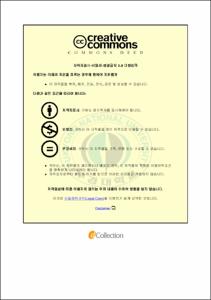대도심 하구역 개발과 보전의 융합이용모형개발
- Alternative Title
- A Study on the Integrated Utilization Considering Multi Functions of Urban Estuarine Area
- Abstract
- 본 논문은 대도심 하구역의 개발과 보전기능을 극대화하기 위한 융합이용모형을 개발하는데 목적이 있다. 기존의 문헌 및 자료 분석을 통해 통합된 개념을 제시하였다.
이를 위해 낙동강 하구역의 개발과 보전과정에 대하여 제도적, 관리적 관점을 바탕으로 주변 개발동향에 대하여 육역 및 연안역의 관리실태 및 문화재보호구역 변천사 등에 대해 고찰 하였다. 아울러 세계 대표적인 주요 대도심 하구역 관리시스템에 대해 분석하고 이를 바탕으로한 도시기능 연계형하구역 융합이용 모형의 기본개념을 정립하고, 구체적 사례를 적용하여 개발
모형을 제시하였다. 주요내용 및 결과를 요약하면 다음 과 같다.
1) 본 논문에서 개발 제안한 융합이용모형은 기존의 지속가능한 이용보전의 차원을 넘어서서 하구관리에 있어 합리적인 의사결정 및 인간과 자연의 조화로운 공존에 무게중심을 두었다.
2) 대도심 하구역의 이용/개발/보전을 위한 정책으로는 자연과 인간이 소통하는 시스템 구축, 인간과 자연을 고려한 안전망 구축, 자연친화적 지역개발과 어업인의 지원, 가치있는 생태계 및 습지 서식지의 보전의 가치를 과학적/철학적 관점에서 제시하였다.
3) 아울러 최종적으로 대도심 하구역의 융합이용형 모형개발의 주요과제로 하구일원의 통합관리, 습지생태계의 유지 및 보전, 하구생산성의 적정한 이용, 오염과 방재의 관리를 포함한 통합관리 모형 구축/실행방안을 제시하였다.
The purpose of this study is to develop a fusion utilization model aimed at maximizing the development/management function of river estuary and to present an integrated concept by analyzing the existing document and data.
To this end, it was necessary to examine how the Nakdong River estuary has been developed and preserved with a focus on systems and management practices by looking into the development trends of its surrounding areas, the actual management conditions of land and coastal zones and the changes in the cultural property protection zone along the estuary. In addition, this study analyzes global management systems of urban river estuaries in major cities across the world, and this analysis helped to propose the basic concept of the fusion utilization model linked with functions of a city, while development models were also presented by applying detailed examples.
The main points of this study are as follows: 1) The fusion utilization model suggested in this paper goes beyond the existing idea of sustainable utilization and conservation, putting an emphasis on rational decision-making in estuary management and peaceful coexistence between human and nature. 2) Policies for utilization/development/conservation/regeneration of urban river estuary include the establishment of communication system between human and nature and a safety net considering both human and nature, the support for environment-friendly community development and the importance of preserving valuable ecosystem and wetland habitat. 3) Lastly, this study suggested that the major tasks for the fusion utilization model development are the integrated management of estuary areas, the conservation and preservation of wetland ecosystem, proper utilization of estuary's productivity, and the introduction and action plans of the integrated management model including the best way to address contamination and disaster management.
- Issued Date
- 2010
- Awarded Date
- 2010. 8
- Type
- Dissertation
- Publisher
- 부경대학교
- Department
- 대학원 해양산업공학협동과정
- Advisor
- 류청로
- Table Of Contents
- 1. 서 론 1
1.1 연구배경 1
1.2 연구목적 및 내용 6
2. 낙동강 하구역의 변천과정 및 환경특성 8
2.1 서언 8
2.2 낙동강하구역의 자연환경 현황 9
2.2.1 수리·수문 현황 9
2.2.2 수질 및 퇴적 환경 변화 15
2.2.3 지형·지질 다양성 현황 25
2.3 낙동강 하구 주변의 개발동향 28
2.3.1 육역부 이용 및 관리실태 28
2.3.2 연안역 이용 및 관리실태 34
2.3.3 낙동강하구역의 문화재 보호구역 변천과정 36
2.4 하구역 해양환경변화와 그 피해 40
2.4.1 태풍에 의한 재해 특성 40
2.4.2 소규모 어선 통항로 매몰과 항로준설 42
2.4.3 하구주변 오염물질 배출시설과 수질환경 44
2.4.4 천해양식어장의 분포와 정비사례 52
2.5 결언 55
3. 하구역 관리/이용 현황 및 문제점 56
3.1 서언 56
3.2 하구역 정의 및 경계설정 58
3.2.1 공간적인 개념의 경계설정 58
3.2.2 행정, 법제적 경계설정 64
3.3 현행 하구관리체계의 현황과 문제점 67
3.3.1 국내의 하구유형분류 67
3.3.2 하구환경관리 관련법 69
3.3.3 하구관리체계의 문제점 72
3.3.4 하구환경관리제도의 적용 한계 76
3.4 일본의 하구역 관리/이용 사례 81
3.4.1 연안만 환경관리프로그램 81
3.4.2 오사카만의 항만환경 재생시책 81
3.4.3 환경복구의 추진사례 82
3.4.4 도코만의 자연재생/환경복구 85
3.5 미국의 하구역 관리/이용 사례 88
3.5.1 국가 하구연구보전 시스템 88
3.5.2 미국의 국가하구프로그램 89
3.5.3 하구서식지복원프로그램 93
3.6 결언 95
4. 대도심과 연계한 하구역 통합관리요소 선정 96
4.1 서언 96
4.2 도시기능의 정의 및 요소 선정 97
4.2.1 낙동강 하구의 인구/토지이용/농수산업 98
4.2.2 항만 및 생산기능 요소 103
4.2.3 생태환경 및 경관적 요소 107
4.3 하구역의 생태·경제학적 가치평가 108
4.3.1 Emergy 개념의 정의 및 적용방법 108
4.3.2 낙동강하구역의 에머지 평가결과 110
4.4 대도심(부산권역)과 연계한 하구관리 조화 112
4.4.1 하구관리 유형의 구분 113
4.4.2 선진국의 하구분류 체계 요약 115
4.4.3 도시 기능형 하구관리 비전 및 원칙 124
4.5 결언 126
5. 대도심 하구역 융합이용모형의 개발과 활용방안 127
5.1 서언 127
5.2 융합이용모형의 기본 개념 128
5.2.1 융합이용모형의 필요성 128
5.2.2 융합이용모형의 기본개념 설정 129
5.3 낙동강 하구역 융합이용모형의 구축 130
5.3.1 융합이용모형의 필요성 및 그 의의 130
5.3.2 융합이용모형의 활용방안 132
5.4 통합관리 개발 모형의 적용 154
5.4.1 이용기반의 통합관리 모형 : A형 154
5.4.2 보전기반의 통합관리 모형 : B형 156
5.4.3 자연 친화형 통합관리 모형 : C형 159
5.4.4 하구역 융합이용방안 162
5.5 결언 163
6. 요약 및 결론 164
참고문헌 166
부록 171
- Degree
- Doctor
- Appears in Collections:
- 대학원 > 해양산업공학협동과정
- Files in This Item:
-
-
Download
 대도심 하구역 개발과 보전의 융합이용모형개발.pdf
기타 데이터 / 40.51 MB / Adobe PDF
대도심 하구역 개발과 보전의 융합이용모형개발.pdf
기타 데이터 / 40.51 MB / Adobe PDF
-
Items in Repository are protected by copyright, with all rights reserved, unless otherwise indicated.